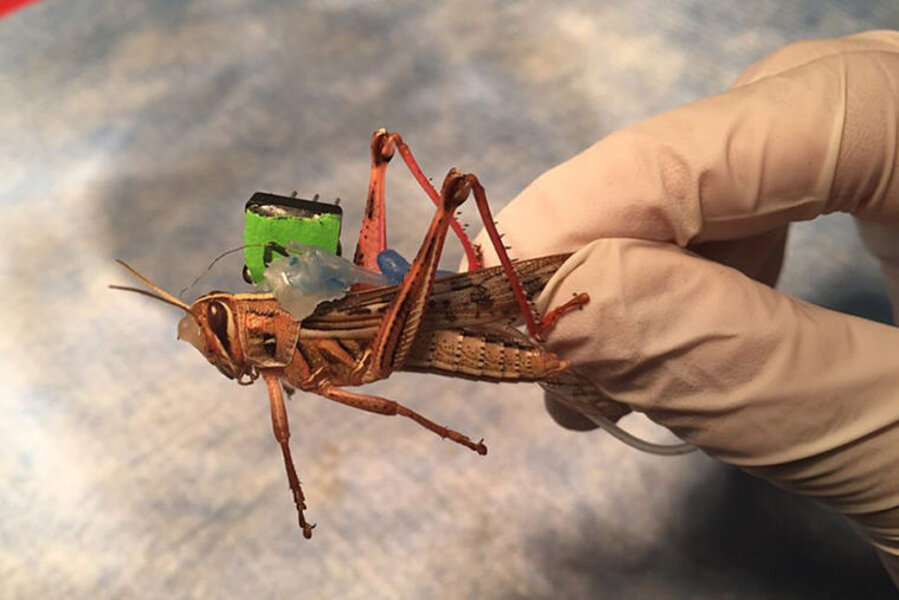Can locusts sniff out bombs? The US Navy is trying to find out
Loading...
Inventors have for centuries turned their admiration of noble-seeming beasts into the source of technological innovations. These days, they’re scoping out the less-admired corners of the animal kingdom, too.
A professor at the Washington University of St. Louis will receive a three-year grant worth $750,000 from the Office of Naval Research to turn locusts into the bomb-detection systems of the future.
Locusts have a fantastic sensitivity for odor. Baranidharan Raman, associate professor of biomedical engineering and the leader of the project’s research team, says the team has found a way to harness that sensitivity by inserting small sensors into the locusts that collect and decode information coming from their antennae.
“Why reinvent the wheel? Why not take advantage of the biological solution?” Professor Raman said in a press release. “That is the philosophy here. Even the state-of-the-art miniaturized chemical sensing devices have a handful of sensors. On the other hand, if you look at the insect antenna, where their chemical sensors are located, there are several hundreds of thousands of sensors and of a variety of types.”
The funding will go partly toward developing a way to transmit that information as the locust moves about freely and partly toward a solution for the problem of how to guide the bugs toward the desired locations.
Team member Shantanu Chakrabartty, a professor of computer science and engineering, is designing a “tattoo” made of biocompatible silk that, by emitting mild heat on the locust’s wings, could make it possible to steer them by remote control.
Raman said, in an interview with local radio affiliate KMWU-FM, that it’s too early to speculate how the technology might be put to use in security work. But he gave as an example a scenario in which a locust could be placed on top of a drone and flown into an area "to see if there's an explosive device, like a land mine."
Cockroaches have also been a model for new security-related technology. The Christian Science Monitor reported in February that scientists have built a robot based on the exoskeleton and legs of a cockroach. The Compressible Robot with Articulated Mechanisms (CRAM) mimics the roach's ability to squeeze through tiny crevices and run in a constrained space.
“This kind of robot could be useful in investigating a pile of debris for survivors in a collapsed building or other potentially treacherous situation for first responders, without collapsing the structure in further,” wrote the Monitor. “In theory, robots like CRAM could be deployed in swarms, exploring rubble and reporting back if there are survivors trapped, if it's safe for humans to move in, or other potentially lifesaving data.”
The scientists put live cockroaches through obstacle courses as part of their design research. What they found might put a chill through anyone with a roach problem: American cockroaches could withstand pressures of almost 900 times their own body weight, squeeze through crevices one-quarter of their body height, and run at 20 body lengths per second even with their legs splayed out to the sides.






